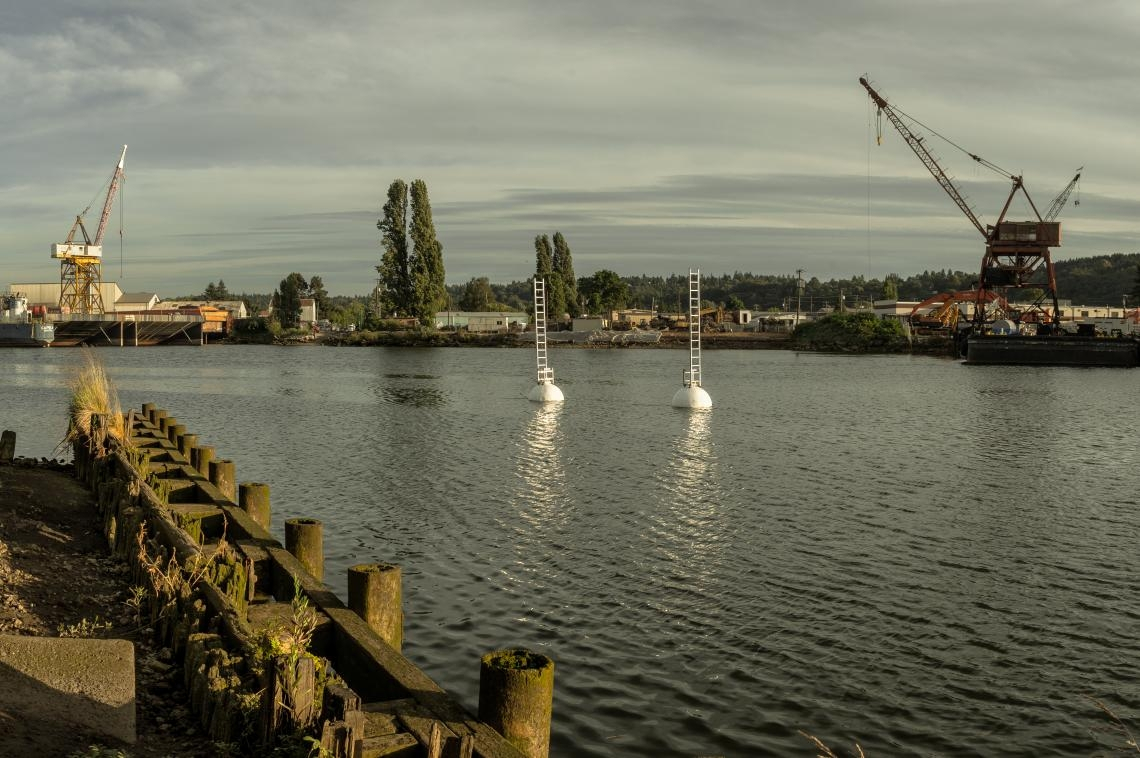
Those who have been following ArtPlace’s progress closely know that we talk about our work as investing in arts-based strategies to help achieve place-based outcomes to reposition arts and culture as a core sector of community planning and development. In order to make sure that we are covering the entire field of community planning and development, we have identified ten sectors that generally cover that terrain.
At our annual Grantee Summit that we hosted in Philadelphia in May, we organized our breakout sessions around these ten sectors, featuring our grantees working in those areas in conversation with an expert from the field. This post is the seventh in a ten-part series continuing those conversations, and it focuses on Environment & Energy—which we previously labelled Environment & Open Space.
Below is a summary of a conversation between Clark Wilson of the US Environmental Protection Agency and Sarah Kavage of Duwamish Revealed.
First, you may notice that we’ve decided to label this sector Environment & Energy rather than Environment & Open Space. In beginning to share our Community Development Matrix with the world, we’ve discovered that “Open Space” isn’t as specific as we would like it to be. Similar to things like community organizing or empowerment, open space is often a means to an end rather than an end in itself. A public square and a playground both could be categorized as “open space”, but their purpose isn’t inherently to improve environmental conditions unless that is an explicit goal. So we decided to go with “Environment & Energy” to focus on a more specific domain.
“Culture and nature are not distinct, discrete elements,” says Clark Wilson, an Environmental Protection Specialist/Urban Designer for the United States Environmental Protection Agency (EPA) and reviewer for our National Grants Program. Within this sector, we look at how the arts can contribute to greater understanding and improvement of environmental conditions in any community—whether “it’s in a back alley or out in Yosemite.” The effective stewardship of the physical environment and its energy resources can dramatically benefit a host of community outcomes—from safer neighborhoods to healthier residents.
In his work reviewing NGP applications, Clark found projects that integrate natural systems and urban design to be the most promising—often fostering constructive dialogue around issues of energy generation, air quality, or reusing and recycling land. Many of these projects leverage green infrastructure to make communities more sustainable: improving drainage and rain runoff, preventing soil erosion, reducing noise pollution, creating renewable energy sources, and promoting greenways that foster the connection between a community and its natural environment. Moreover, the projects made these ecological concerns “more evident, visible, and beautiful”—aesthetic features that both instill pride of place and promote greater investment.
Raising awareness about the unique beauty and history of a place was the primary desire behind Duwamish Revealed, an ArtPlace-funded project along the banks of Seattle’s Duwamish River, conceived by Sarah Kavage (artist and urban planner) and Nicole Kistler (artist and landscape architect). Seattle’s only river, the Duwamish is a now-industrial waterway that runs from Tukwila, Washington to Puget Sound. Once a meandering river and thriving habitat for salmon, shellfish and wildlife, the Duwamish was dredged and straightened to support industrial activity about 100 years ago. Decades of industrial contamination resulted in the Duwamish being declared a Superfund site by the EPA, the beginning of a cleanup process that will continue for 20 years or more. Sarah and Nicole developed Duwamish Revealed as a healing opportunity that bridges communities along the Duwamish through a mutual celebration of shared history and burgeoning restoration on the river. “The power of art,” Sarah notes, is in its ability “to draw people out of their own viewpoints and silos”—crossing bureaucratic and social boundaries. As Clark notes, “political boundaries are arbitrary when it comes to the environment.” Nature has no borders, and creative placemaking, in his view, is “getting people to think beyond their block or their neighborhood” to holistically examine how “everything works together.”
As ArtPlace has repeatedly emphasized, each sector requires intentional planning and investment, and each contributes to an overall healthy community. Sarah and Nicole’s work in the Duwamish illustrates how issues of Environment & Energy are interwoven with other sectors of the ArtPlace matrix. And as Clark suggests, the boundary-crossing versatility of this sector is a “win-win situation”, since it brings “a bunch of unlikely allies together [around] a common good.”
Can you describe other examples of art promoting environmental awareness? Are there any other challenges unique to this sector which we’ve overlooked? Please leave your comments below!





